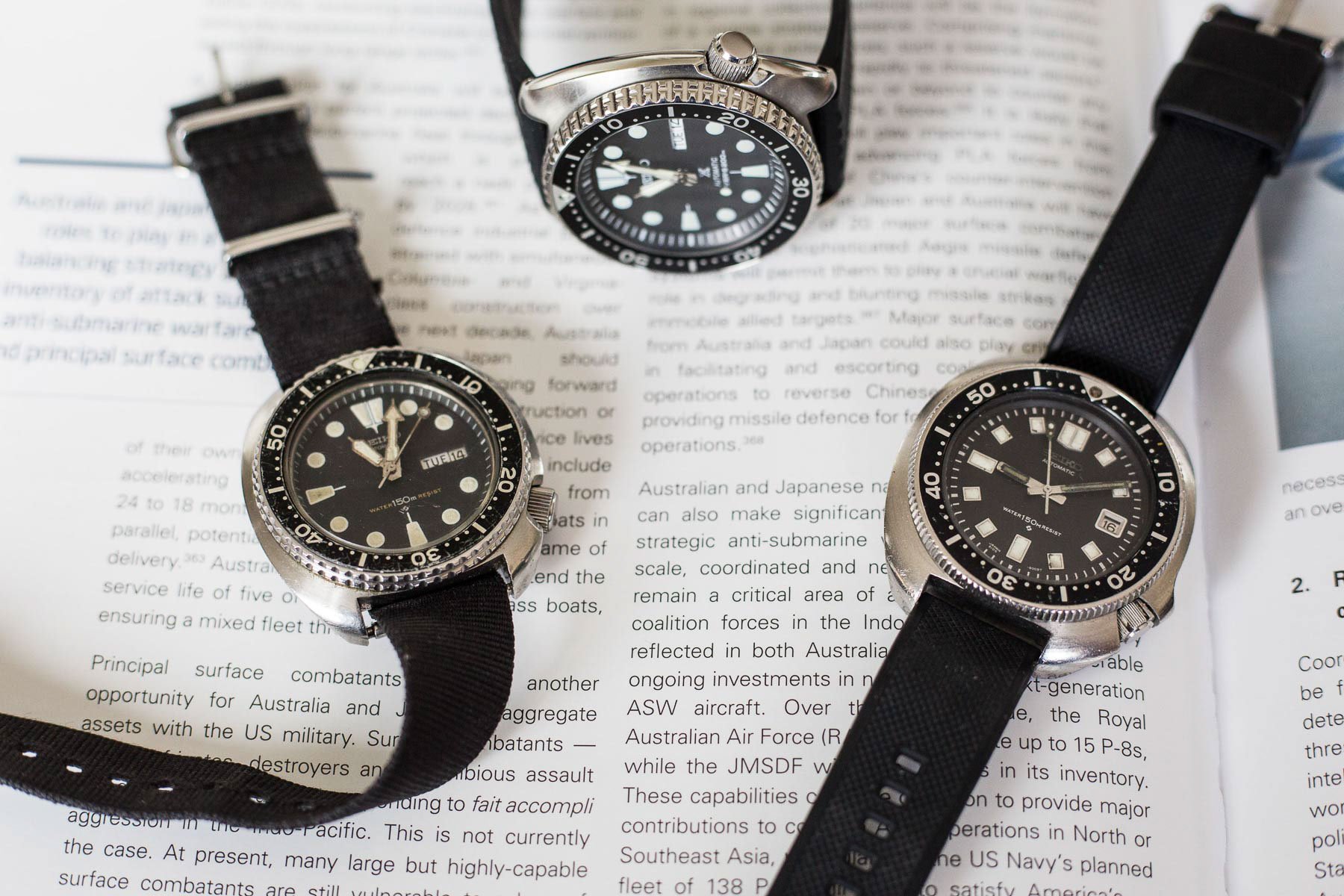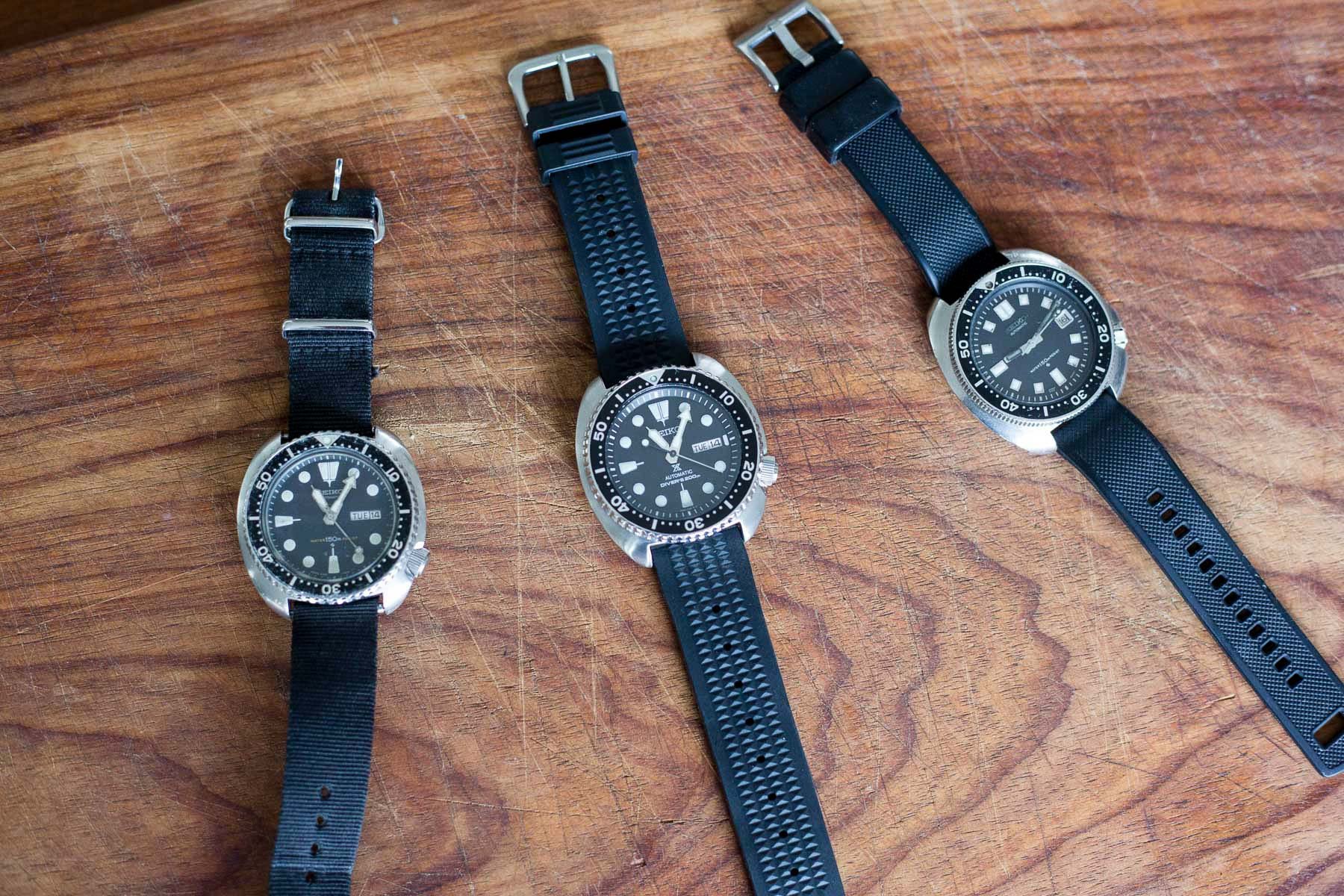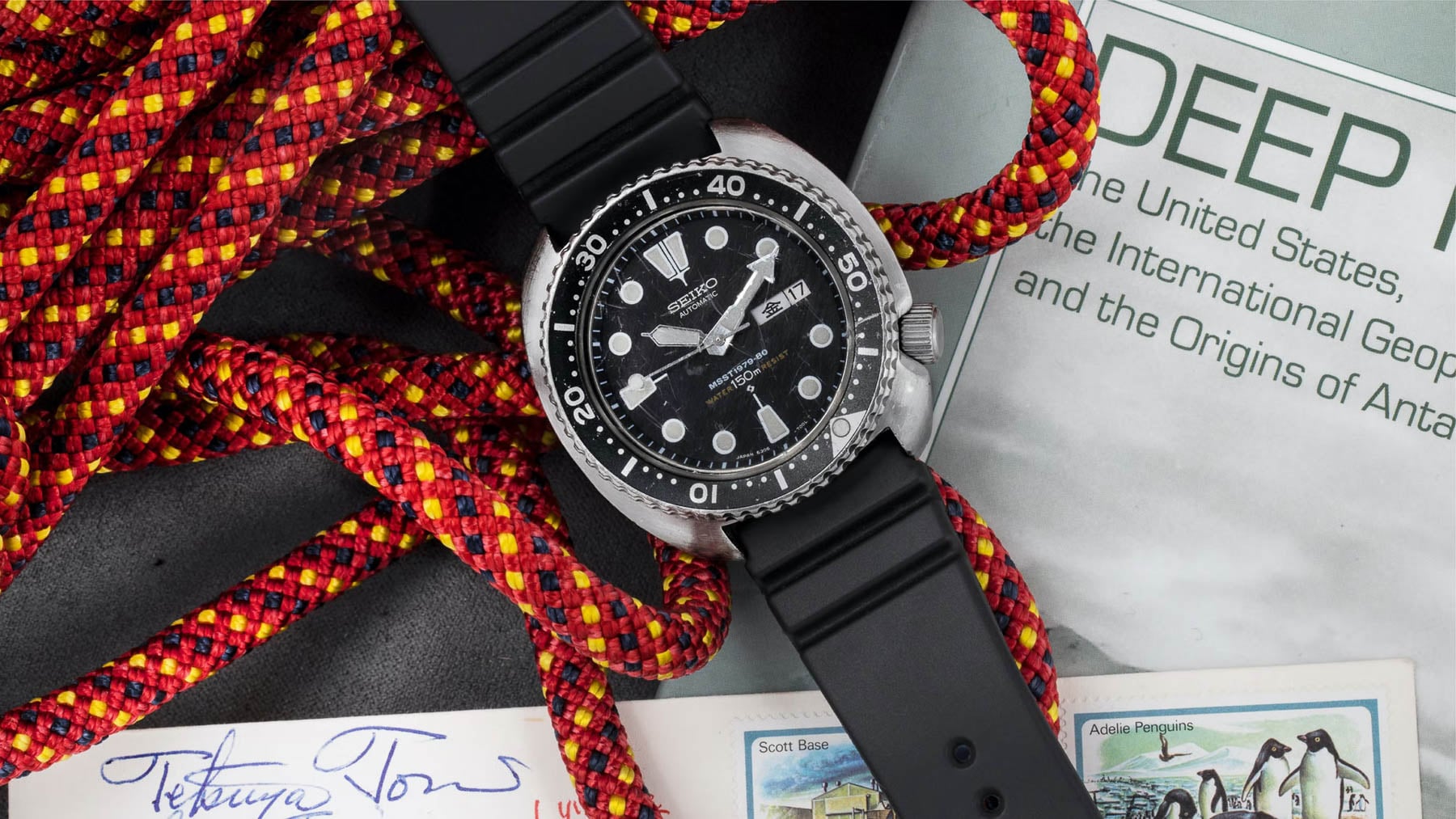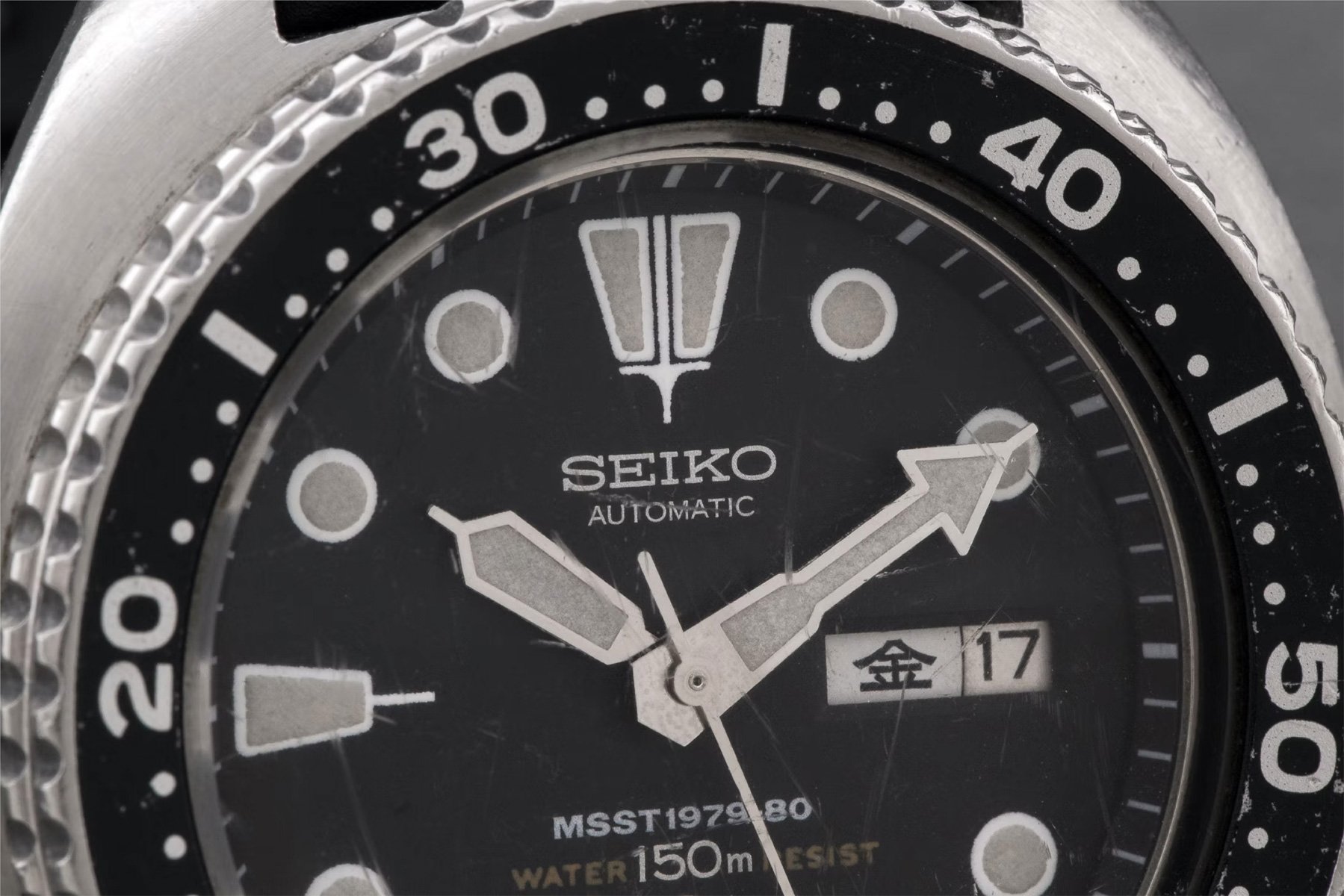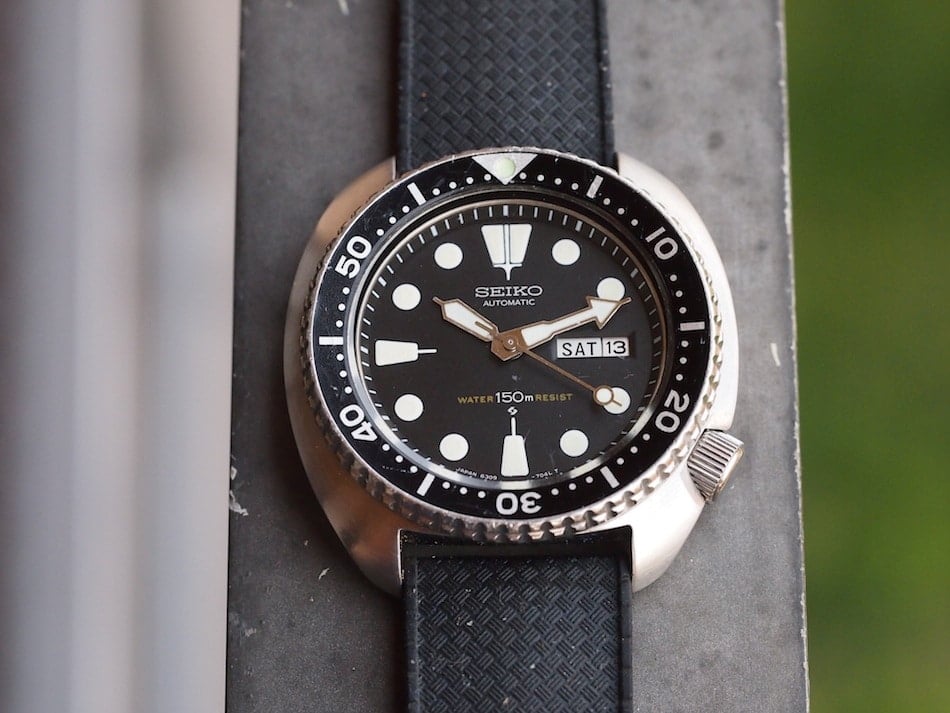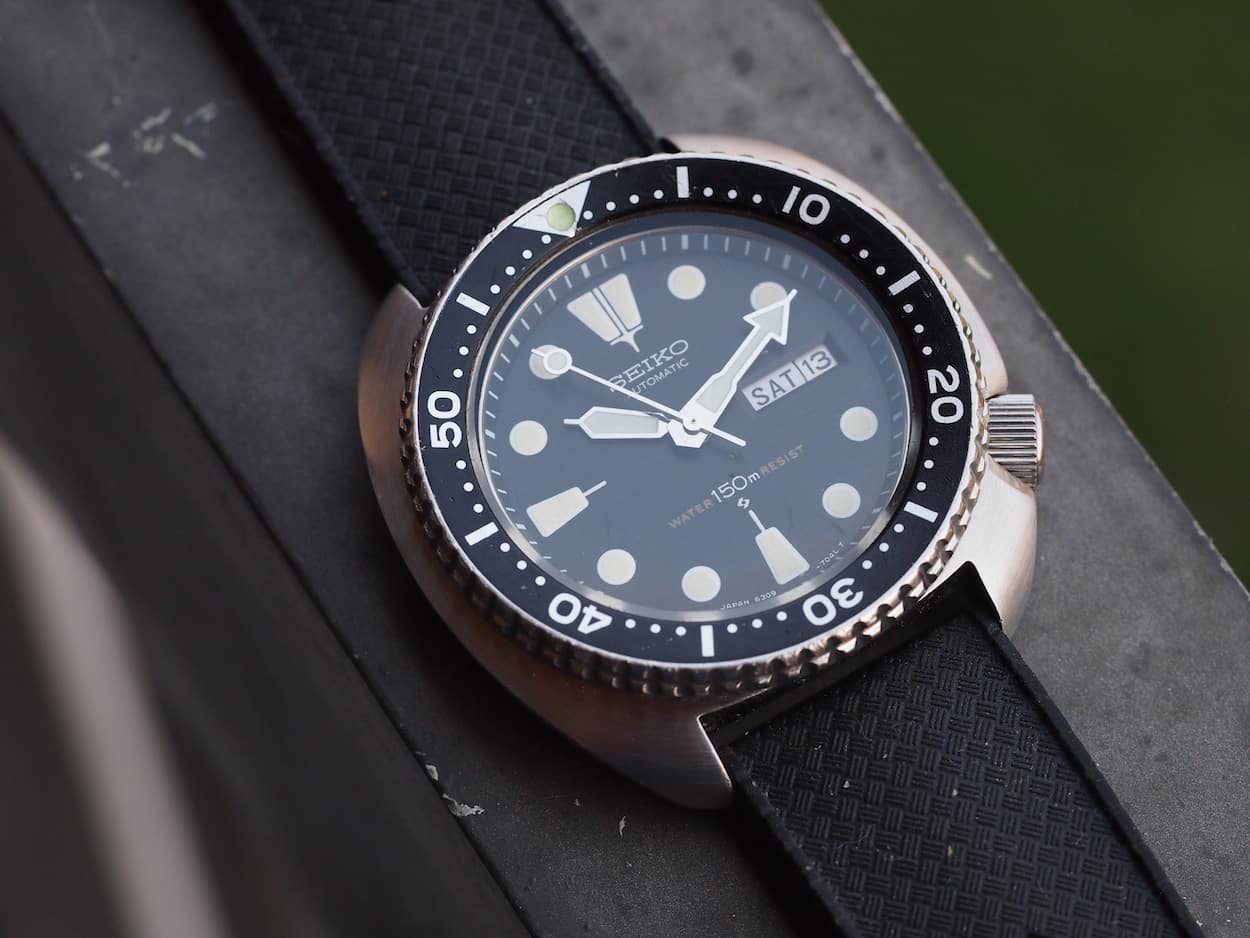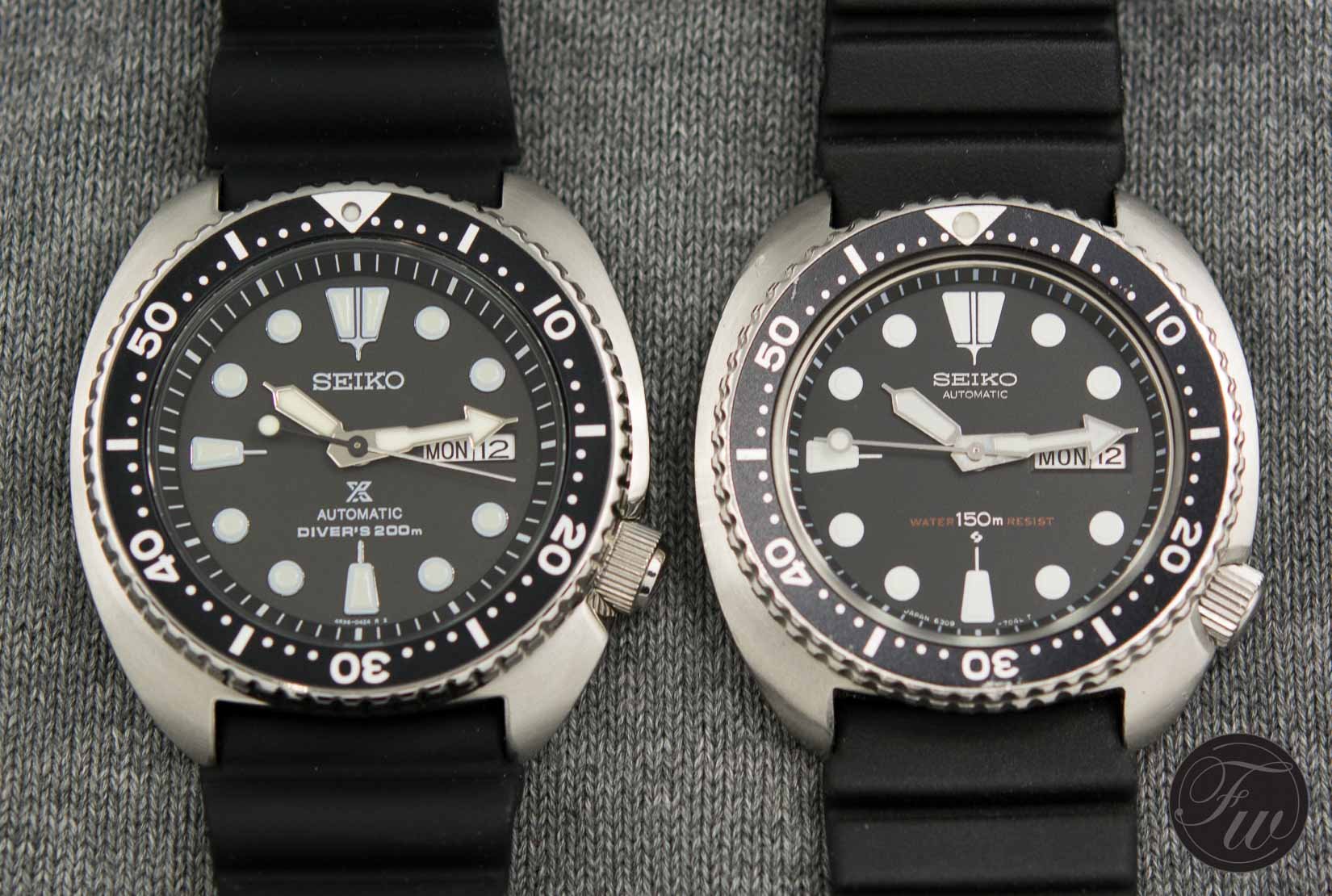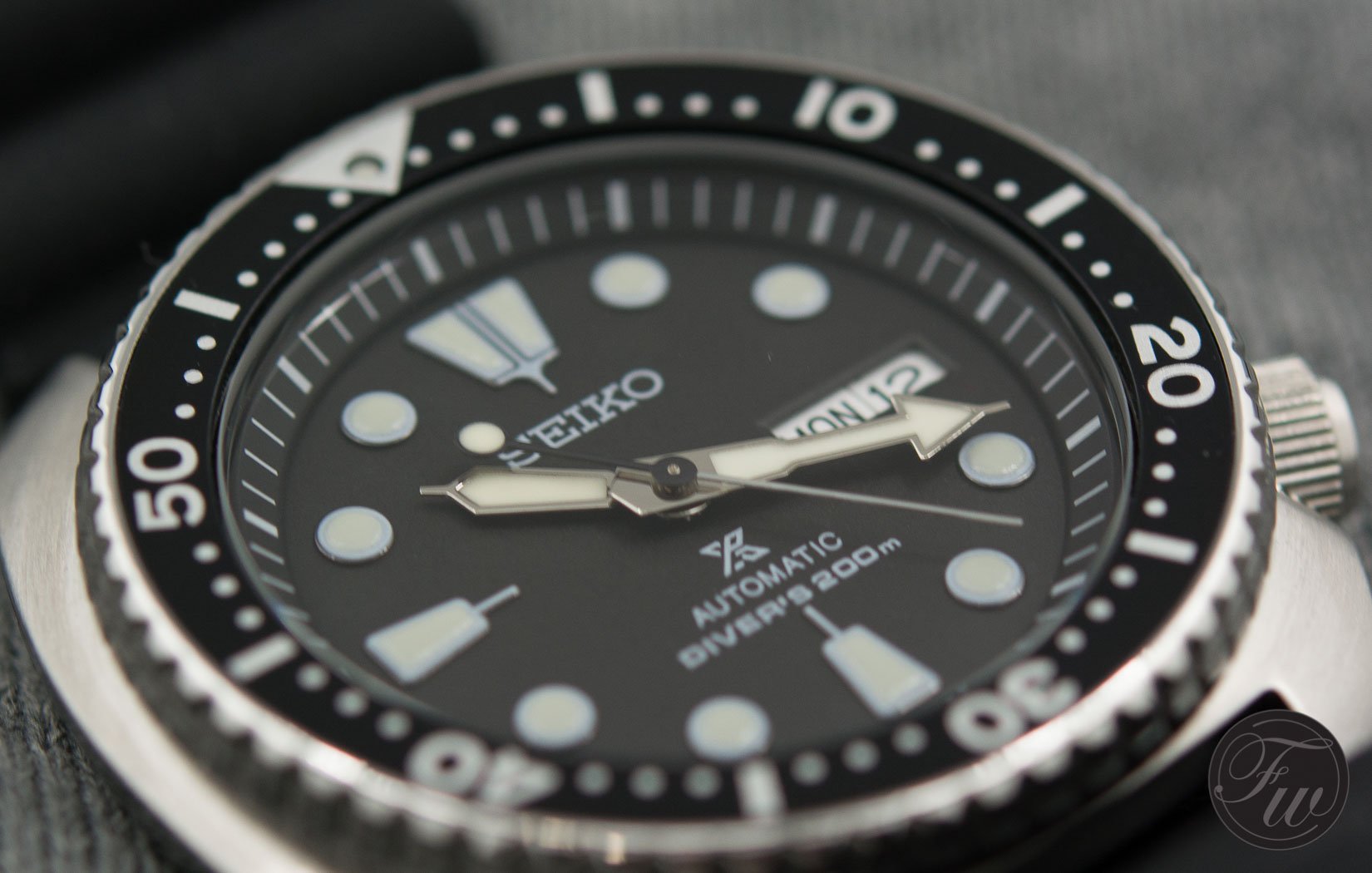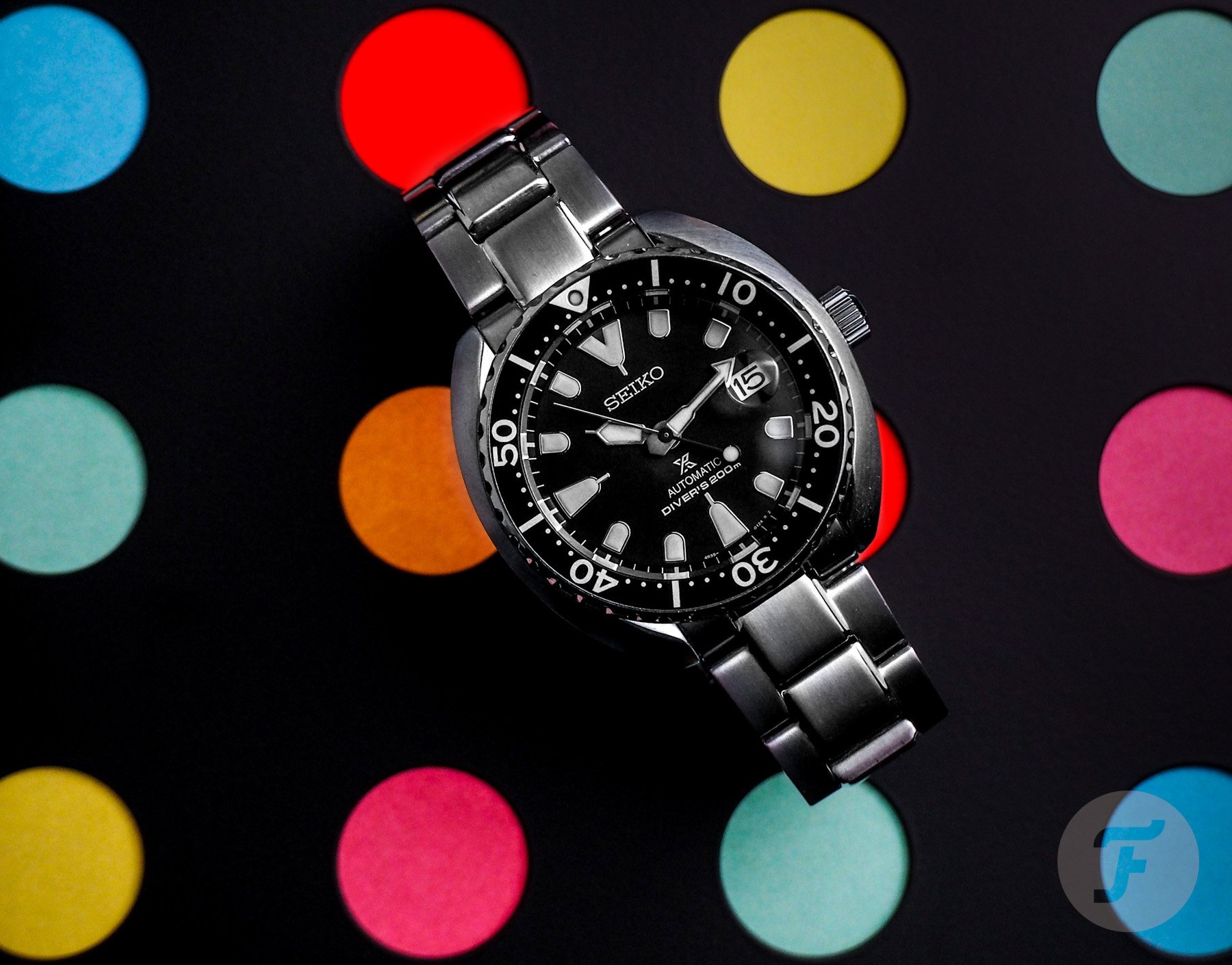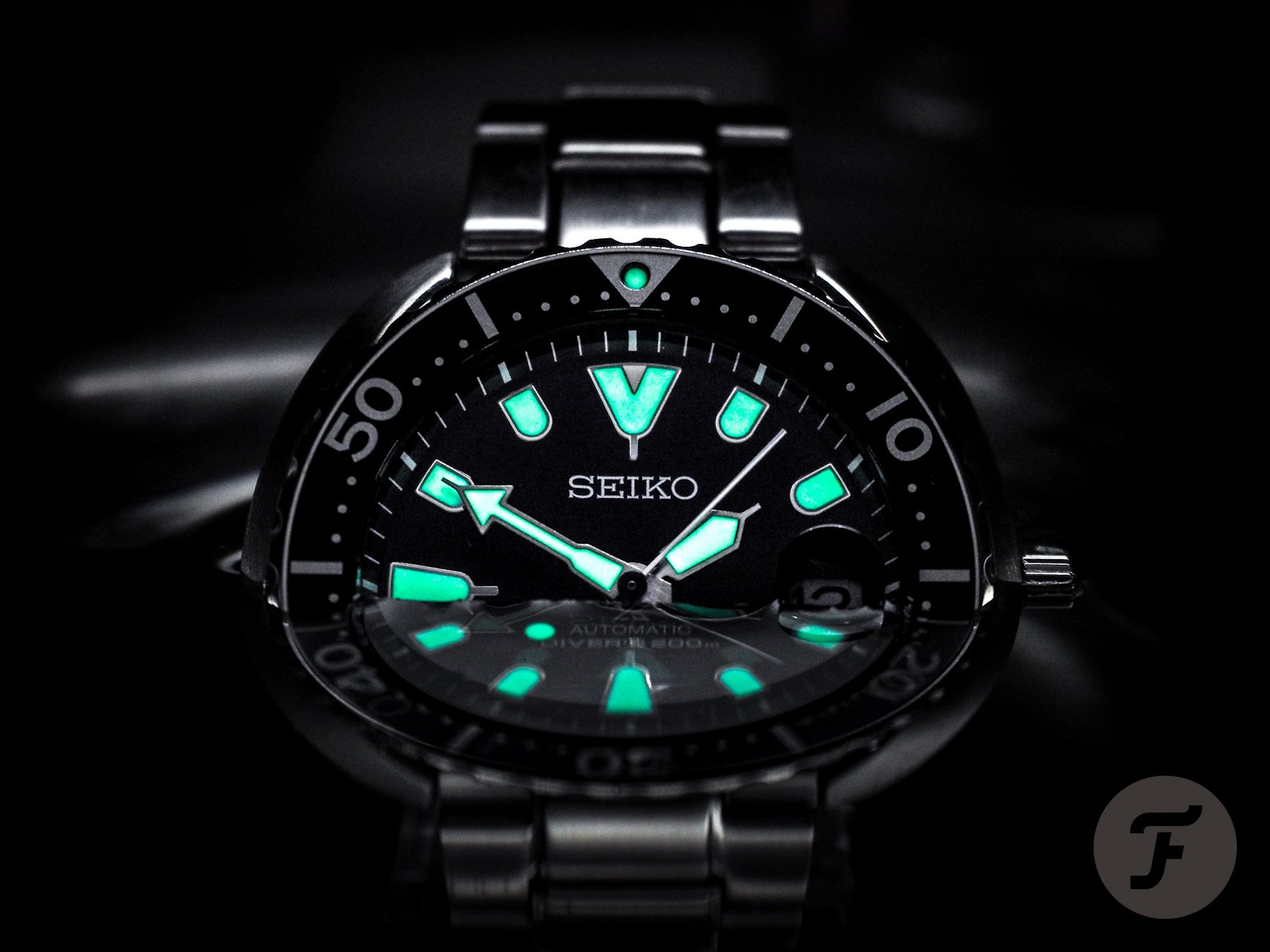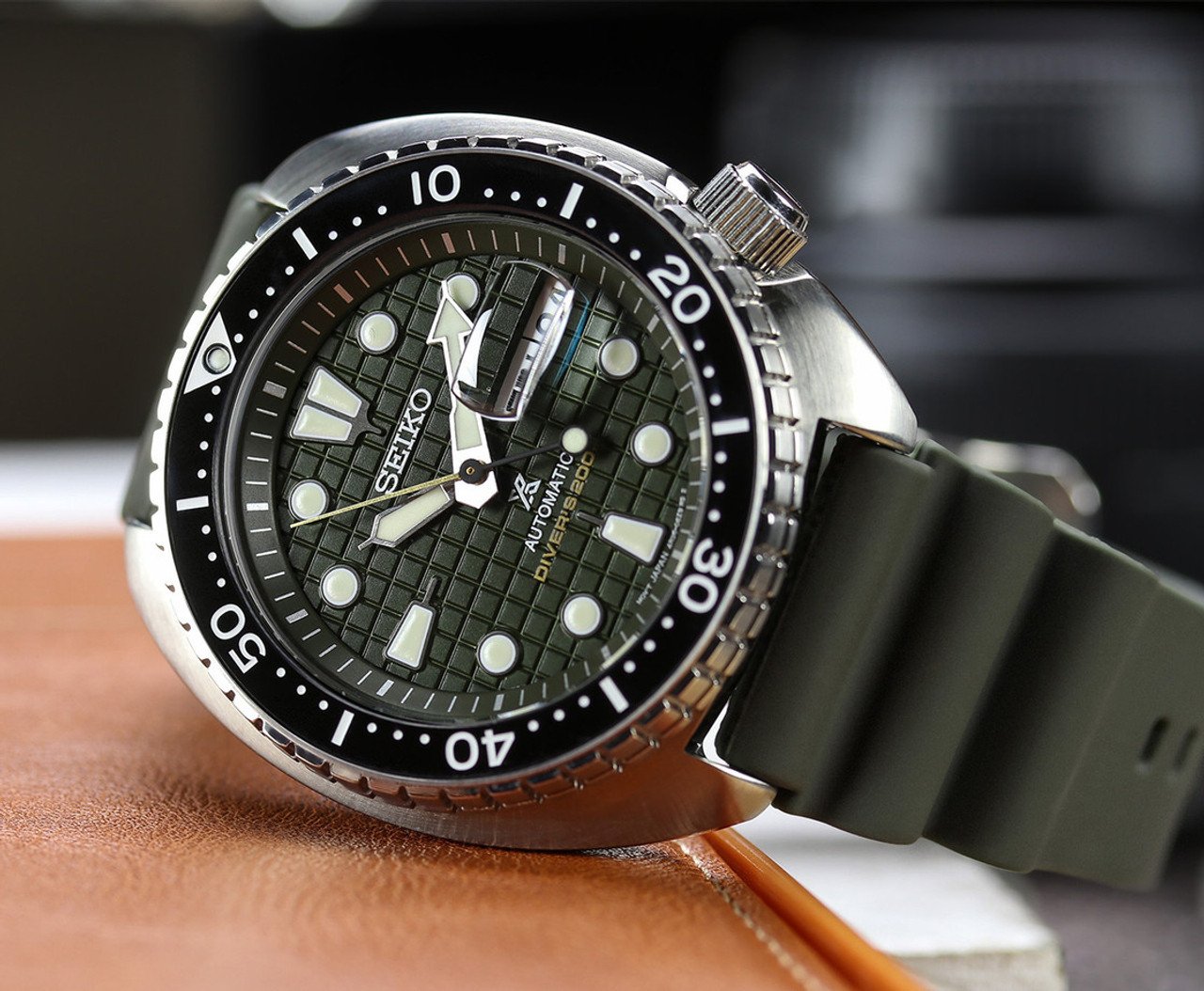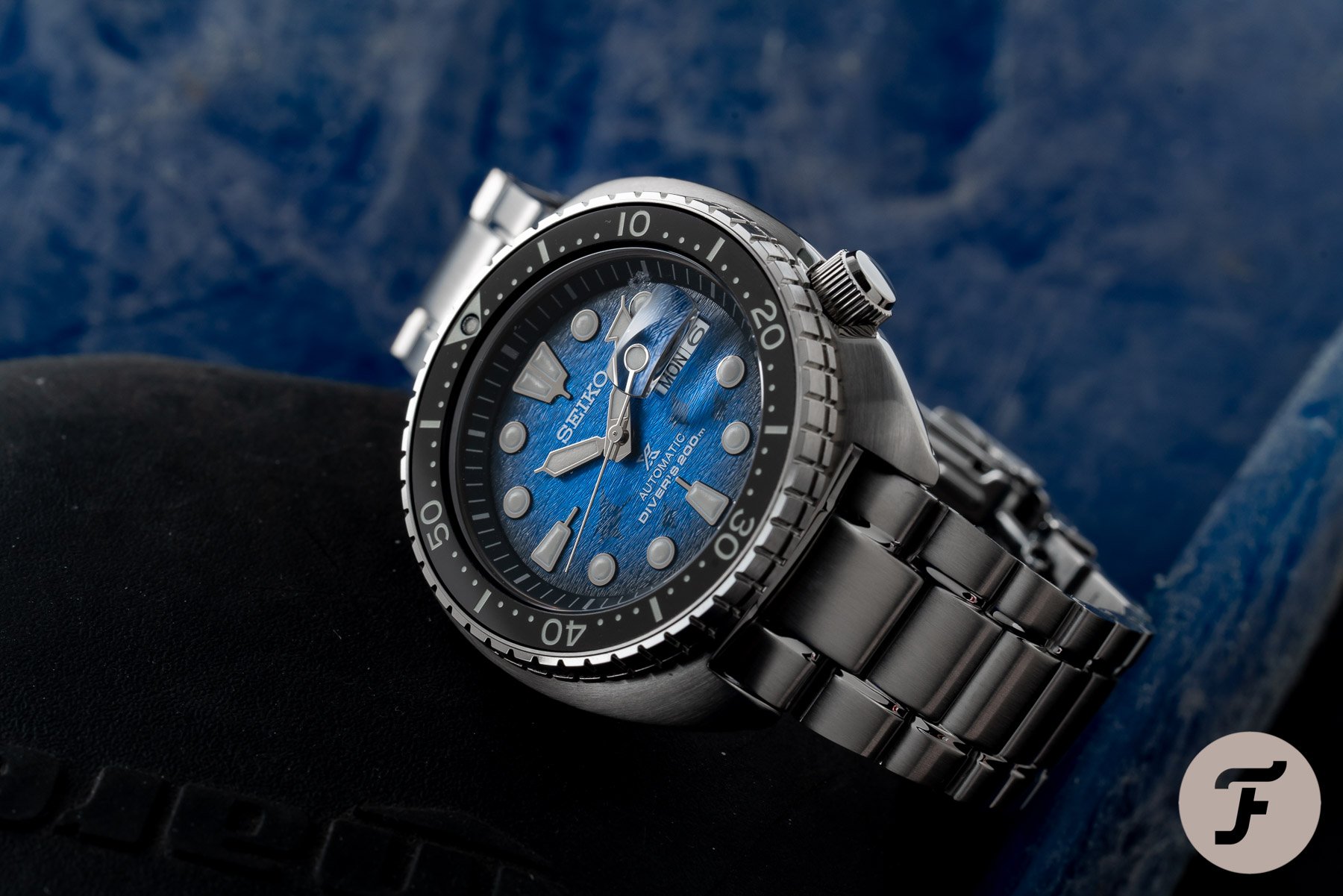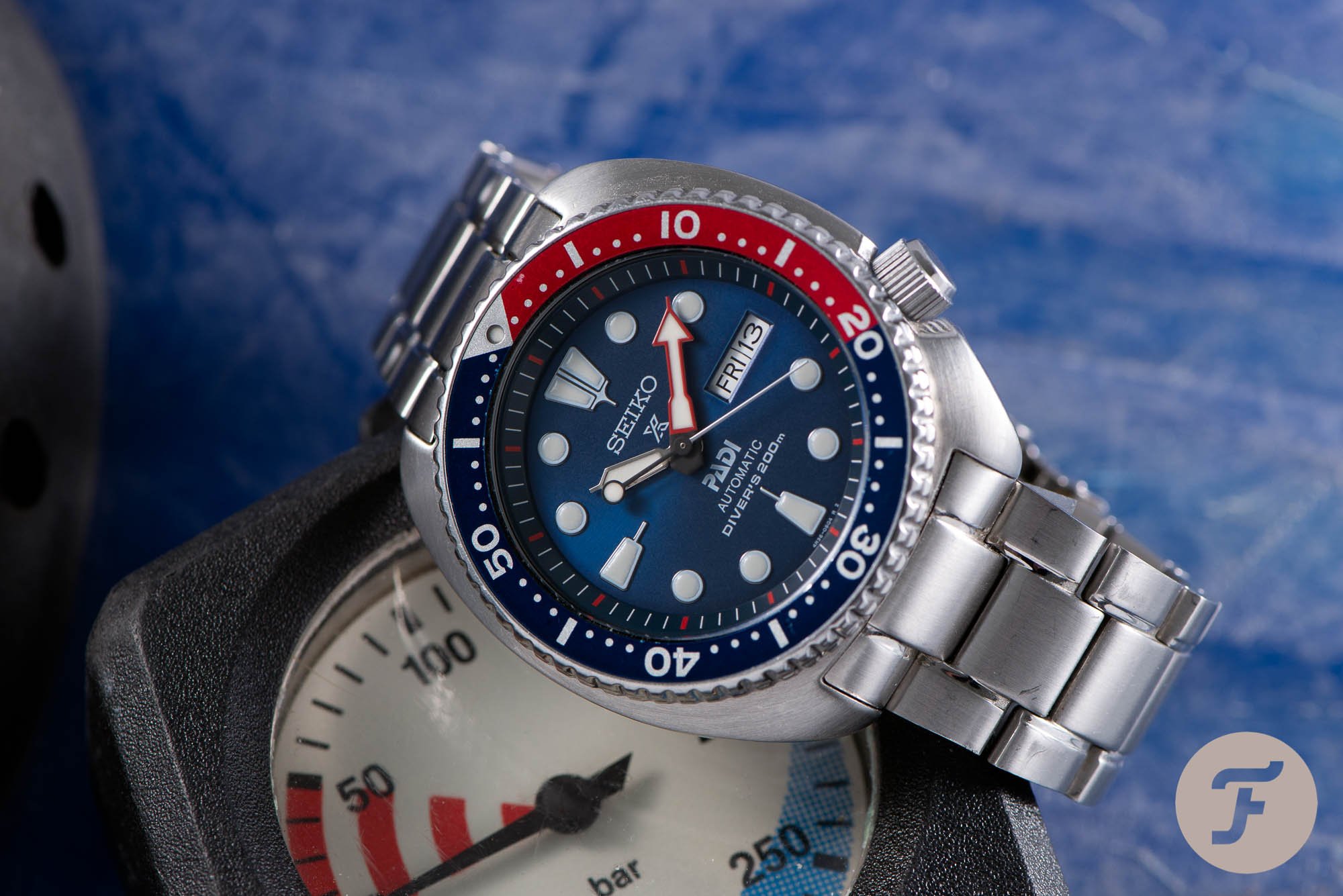Fratello’s Top 5 Seiko Turtle References Ever Produced
Another Friday, another Top 5! In this series, we take one classic watch and choose our five favorite references ever produced. Four of these references will be based on the historical importance of the specific watch in the grand scheme of things. Though there may be some overlap, it’s not a question of which references are the most collectible or of the highest value on the market. The fifth pick is our Fratello favorite that considers the current market price and collectability, potentially making it a sleeper reference. As such, the last pick could be described as our wild card. This week, we’ll take a look at the Seiko Turtle. What are the best references in the history of this famous Seiko dive watch?
Last week, we published the first Seiko list in this series, which focused on the Marinemaster. For this week’s list, we decided to stay with Seiko for a bit and focus on another classic from the Japanese brand, the “Turtle.” This nickname refers to the famous case shape of the watch, which is reminscent of a turtle shell when seen from above. Let’s briefly remind ourselves of its history.
The Seiko Turtle is a true classic
Seiko introduced the first watch that we now call the Turtle in 1976 for the Japanese domestic market only. The watch, reference 6306-7000/1, was designed by Ikuo Tokunaga. What Tokunaga created was an evolution of the now-famous ref. 6105-8000 that preceded the Turtle. While drawing inspiration from the 6105-8000, Tokunaga’s case was more rounded. It kept the crown’s characteristic position at 4 o’clock, but the case flowed nicely on either side of the crown. The follow-up to the first Turtle model was also the first version of the watch for the international market. It followed the 6306-7000/1 in the same year.
This new 6309-7040/9 remained in production until 1988. As Mike explained in his in-depth article about the first generation of international Turtles, the 6309-7040 reference was used for the Japanese market and the rest of the world, while the 6309-7049 was for the North American market. After the Turtle was discontinued, Seiko introduced new models that presented an updated aesthetic, such as the ref. 7002 and, later, the SKX007. Mike wrote his article advocating the return of the Turtle in 2015, just months before Seiko announced the iconic diver’s return. In 2016, the first new Turtles went on sale, and the watch has been part of the Seiko Prospex collection ever since. Many have dubbed it a future collectible, such as Henry Zwartz, who recently wrote a great article on the subject. Before reading that, look at the five best Turtle references Seiko produced.
Seiko 6306-7000/1
Let’s start at the top of the mountain. The first reference is the grail for many Turtle collectors. While the differences with the 6309 are small, this one is the most sought-after Turtle. The first reason is that it started the great legacy of this iconic Seiko diver. The second is that the 6306 is much rarer than the 6309. The production numbers were lower, making it harder to find and desirable for collectors. And then there are the differences between the watches. The first is the difference in the movement. The 6306A caliber of the first model has 21 jewels and features hacking seconds, whereas the 6309A movement came with 17 jewels and did not feature hacking seconds.
Another visible difference is that all 6306 models had an English/Japanese kanji day wheel, whereas most 6309 pieces had an international day wheel. But there are obviously Japanese versions of the 6309, and both watches look very much alike. The 6306 introduced the ~45mm cushion-shaped case that was 48mm long and 13mm thick with a 22mm lug spacing. It was water resistant to 150 meters, as mentioned in gold and white printing on the dial. The watch featured a matte black dial with the instantly recognizable “sword” hour index at 12 o’clock, bell-shaped hour markers at 6 and 9 o’clock, and round markers for the other hours. Add the characteristic hands and the slightly inward-sloping bezel with its two rows of squared knurling, and you have a classic. This watch now goes for roughly €800 to €2K, depending on the condition.
Seiko 6309-7040/9
If the 6306 is the grail, the 6309 is the obvious next pick. But some actually prefer this version as it is easier to get and is essentially the same watch except for the small differences in the movement. It definitely has that same great charm that the 6306 has, and it is available for less money than the 6306. The Seiko 6309 is a perfect vintage diver to add to your collection. It features the same specs and design as the 6306, but let’s take a little closer look at it. The design of the 6309 was conceived in the 1970s, and it feels very much like a ’70s watch. Despite that, its design has a certain magic to it that prevents it from being too defined by that era. Honestly, I didn’t think that for a while until I bought my modern Turtle. That’s when it clicked.
In buying an original Turtle from the ’70s or ’80s, you get the true charm of that first internationally available model. It has become one of the most recognizable Seiko divers out there, it’s the perfect vintage daily wearer, and it is a true style statement. If you are looking to buy a 6309, I suggest that you read Mike’s in-depth article that I mentioned before. In it, he also explains that there are many 6309s with replacement parts out there. And not just official Seiko replacement parts, mind you. Because these watches were used daily, they needed to be serviced regularly. And often, we see cheap aftermarket parts instead of original Seiko parts. So whenever you search for one, do your homework to ensure you do not end up with a Franken piece. Depending on the condition, finding an original 6309 is possible for anywhere from €500 to roughly €1,500.
Seiko Prospex SRP777
For the third spot, we take a big leap and move forward to 2015. As I already mentioned, that is when Seiko announced the return of the Turtle. To the delight of many fans, the watch was available for sale in 2016 for the first time in almost 30 years. And Seiko did a great job of reviving the Turtle. Aesthetically, the brand mostly stuck to the original design from the 1970s. As Robert-Jan explained in a side-by-side review, there are some minor differences. The new SRP777 was introduced as part of the Prospex collection, hence the Prospex logo on the dial. Additionally, the water resistance rating increased to 200 meters, which is also mentioned on the dial.
The crown shape is also slightly different, and the hour indexes have the same shape but are slightly different in how they are applied. The new model features printed white outlines that are filled with Seiko’s Lumibrite. Another quirky detail is the different seconds hand. The 6309 featured a lollipop hand, whereas the SRP777 uses the lollipop end as the counterbalance. A big update was the modern in-house 4R36 movement, which proved to be a reliable workhorse. Overall, the new Turtle was a great homage to the vintage 6306 and 6309. It became an instant hit, and different (color) variations followed soon after.
Seiko Prospex SRPC35K1 “Mini Turtle”
In a surprising but clever move, Seiko introduced the “Mini Turtle” in 2017. If you are not a fan of the large 45mm case of the Turtle, its smaller brother may be the right pick for you. Our own Nacho wrote a lengthy article about his SRPC35K1. In it, he explained that the 42mm Mini Turtle was the better pick for him because of its size. And I understand that. As an owner of the SRPA21 PADI Turtle from 2016, I can say that on the bracelet, it’s a very substantial watch that is too big for some. With the Mini Turtle, you also get some other differences. As Nacho explained, the case shape is smaller and different at the lugs. They have an internal polished facet that creates a slightly different look.
Additionally, the slimmer case also has the crown at 3 o’clock instead of its bigger brother’s characteristic 4 o’clock position. It ensures the case keeps perfect symmetry and flowing lines, making it a Turtle-inspired case that looks very nice. It is substantially smaller at a little over 42mm with a thickness of 12.6mm and a lug-to-lug of 43mm. The dial design is also different, featuring “tombstone” lume plots that differ from the indices on the Turtle. On top of that, rather than a day-date indication, the watch comes with just a date window and a magnifier. The magnifier is an acquired taste, and as Nacho explained, some fans have removed it with a lighter. Inside the case, Seiko used its automatic 4R35 movement, which proved reliable for the now-discontinued Mini Turtle. But this quirky piece is definitely part of the Turtle family, and you can pick it up anywhere between €400 and €750.
Seiko Prospex SRPE05 “King Turtle”
In late 2019, Seiko announced a new version of the Turtle. The brand unveiled an upgraded version of the watch with a sapphire crystal, a ceramic bezel insert, and new textured dials. This new “King Turtle” was generally praised as a great step up in modern execution while remaining affordable at just over €600 for the regular models. Seiko also introduced several special editions that go for slightly more. But considering what you get in return, the King Turtle offers great value for money. The watch features the same 45mm × 13.2mm case with a lug-to-lug of 47.7mm. Seiko also equips the King Turtle with the same in-house caliber 4R36.
What I found interesting was the change in dials. The textured dials are not necessarily my favorite, but the green SRPE05 was a hit. The combination of the army-green dial, a color-matched rubber strap, and a black bezel creates a great-looking piece that I would gladly wear daily. But as I mentioned, Seiko also introduced a number of special editions that featured more extravagant dials. Rob reviewed the 2020 Manta Ray SRPE39, which he absolutely adored. I was less of a fan of this version. Although I must admit, that was also a matter of the right shade of blue because the Manta Ray version for 2021 (SRPF77) looked a lot better. But given the chance, I would pick the green SRPE05 any day. It is a great step up from the regular model, and it also introduced a different side of the Turtle’s aesthetic.
Final thoughts
There you have it — five great Seiko dive watches that are part of the Turtle family. Writing the article made me immediately want to wear my PADI Turtle that you see pictured above. I was once again reminded of the awesome design and incredible value for money that the Turtle offers. We realize that you might not agree with all the picks for this list. That’s why we would love this to be the start of a bigger discussion. Let us know your picks for the most relevant references in the development of the Seiko Turtle. We will see you next week for another Top 5 list of references for a different classic watch.

